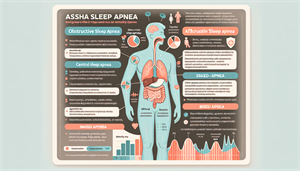
How to Train Your Body to Sleep on Your Back
Struggling to sleep comfortably on your back? This guide is here to change that. Discover essential tips on how to train your body to sleep on your back, overcoming common challenges like discomfort, sleep apnea, and snoring. We’ll take you through simple, actionable steps to make back sleeping a natural part of your nightly routine, without spoiling the wealth of insights waiting for you as you read on.
Key Takeaways
Back sleeping offers numerous health benefits, including spinal alignment, reducing acid reflux symptoms, and preventing sleep wrinkles by minimizing contact of the face with a pillow. Transition to back sleeping can be facilitated with the use of correct mattress firmness, strategic pillow placement, arm and leg positioning, and tools like weighted blankets and adjustable bed bases. Consistency, patience, and having a regular sleep routine can significantly aid the transition to back sleeping, while techniques like elevating the head can help manage sleep apnea and snoring.
The Advantages of Back Sleeping
Back sleeping offers more than just a restful position; it introduces a multitude of health benefits. This preferred sleep position can lead to better sleep quality, reduced muscle tension, even weight distribution, and a pain-free and natural position for your spine. Sleeping on your back is one of the best sleep positions for overall health. Plus, it can even help you look younger! Yet, the advantages extend beyond this. Sleeping on your back with the head slightly elevated can help reduce acid reflux symptoms by preventing stomach acid from flowing back into the esophagus. And if that wasn’t enough, think about your skin. Back sleeping can help prevent sleep wrinkles by reducing facial contact with the pillow, which contributes to better skin health and appearance.
Spine Alignment and Pain Relief
Regarding spinal health, back sleeping reigns supreme. By keeping the spine in a neutral position, back sleeping promotes spine alignment and can help alleviate pain in the neck, back, and hips. If you’re transitioning from side sleeping to back sleeping, you might find some discomfort initially. But don’t worry, a simple trick can help. Placing a small pillow under the knees while back sleeping can help maintain the natural curve of the lower back, support hip flexors, and relieve discomfort. And remember, the size of the pillow matters. Using a pillow that is too large or thick may create more discomfort instead of alleviating it.
Acid Reflux Reduction
If you struggle with acid reflux, back sleeping might be your gateway to restful nights, especially if you’re a stomach sleeper prone to stomach sleeping. By sleeping on your back with a slightly elevated head, you can prevent stomach acid from traveling up into the esophagus. This can make it easier to fall asleep and stay asleep throughout the night. Scientific research supports this claim. Studies have shown that elevating the head of the bed can be an effective solution for reducing acid reflux symptoms. So, adopting an inclined position for better sleep hygiene can be beneficial for individuals with gastroesophageal reflux disease (GERD), including stomach sleepers who are trying to transition to back sleeping.
Wrinkle Prevention
Concerned about sleep wrinkles? Back sleeping might be the answer you’ve been seeking. By minimizing facial contact with the pillow, back sleeping can help prevent wrinkles and prolong youthful skin. When you sleep on your side or stomach, your face is pressed into the pillow, contributing to the formation of wrinkles. But when you sleep on your back, you avoid this facial contact altogether. So, not only do you wake up feeling refreshed after a good night’s sleep, but you also wake up looking fresh!
Strategies for Transitioning to Back Sleeping
Transitioning to back sleeping can be facilitated by using the correct mattress firmness, strategic pillow placement, arm and leg positioning, and tools like weighted blankets and adjustable bed bases. Consistency, patience, and having a regular sleep routine can significantly aid the transition to back sleeping, while techniques like elevating the head can help manage sleep apnea and snoring. By following these strategies, you can make back sleeping a natural part of your nightly routine, reaping the numerous health benefits it offers.


